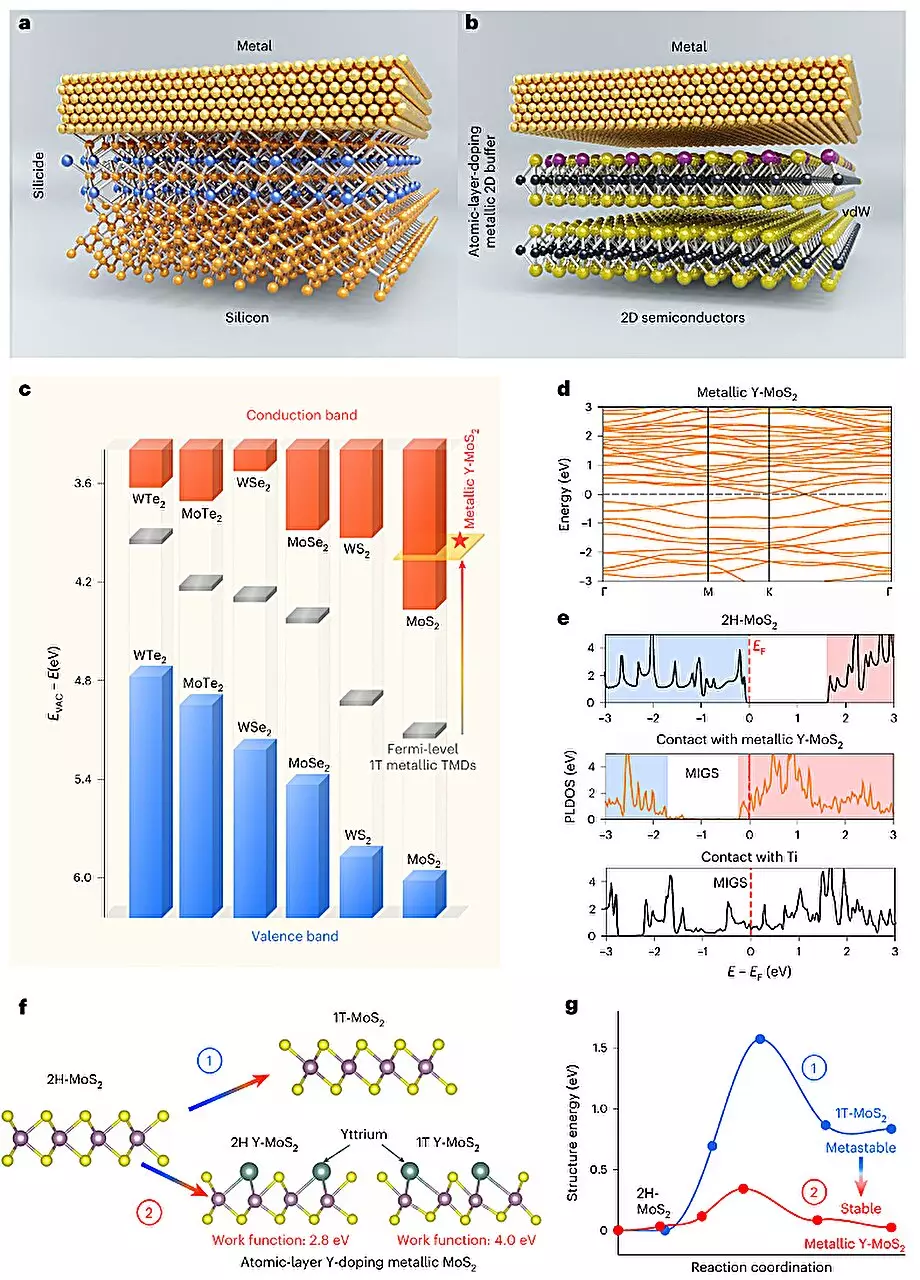In the realm of electronics, researchers have been actively searching for alternative materials to silicon-based transistors in order to push the boundaries of performance. Recently, a team of scientists from Peking University and Chinese Academy of Sciences introduced a novel yttrium-doping strategy that shows promise in enhancing the performance of 2D semiconductors. This approach aims to address the limitations associated with 2D materials, particularly in relation to contact resistance and Fermi-level pinning effects.
The new strategy involves the conversion of semiconducting molybdenum disulfide (MoS2) into metallic MoS2 through the introduction of yttrium. By placing a semi-metal layer between a metal electrode and a 2D semiconductor, the efficiency of carrier injection can be enhanced. This concept draws inspiration from the traditional silicide structure used in silicon-based transistors. The goal of this approach is to mitigate the Fermi-level pinning effects at the interface between metal and 2D semiconductor layers in transistors.
To achieve yttrium doping in MoS2, the researchers developed the plasma-deposition-annealing (PDA) method. This technique involves treating patterned local contact areas with low-power soft plasma to create active sites. Subsequently, a Y/Ti/Au stacked metal is deposited, with a 1 nm-thick active metal Y serving as a solid-state doping source. The Y atoms diffuse into the active sites and are activated through high-temperature annealing in an inert gas environment. This process ensures great thermal stability after annealing and is compatible with advanced-node wafer-scale integration.
Through their research, the scientists observed a phase transition, which they termed as “rare earth element yttrium doping-induced 2D phase transition.” This transition essentially involves the metallization of MoS2 when subjected to the yttrium doping strategy. The team developed ultra-short MoS2-based channel ballistic transistors that exhibited excellent performance as ohmic contacts and displayed notable switching capabilities. These advancements could pave the way for the development of sub-1 nanometer node chips with outstanding performance metrics and lower power consumption compared to conventional chips.
Looking ahead, the researchers aim to further enhance their approach by developing p-type ohmic contacts suitable for 2D semiconductors. By leveraging yttrium doping and other innovative techniques, they hope to contribute significantly to the field of electronics and enable the realization of high-performance, energy-efficient devices.
Overall, the utilization of yttrium-doping in 2D semiconductors represents a significant step towards overcoming the limitations associated with current materials in electronics. With further research and development, these advancements have the potential to revolutionize the industry and drive the next generation of electronic devices.


Leave a Reply